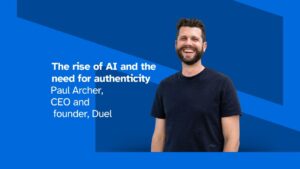Dan Machen, Head of Strategy, Lionize
While concerns remain in post-Covid Australia, consistent behaviours show the way forward for communicators, with creative digital solutions proving increasingly vital.
When medieval map makers reached uncharted territory, they used to inscribe hic sunt dracones – ‘here be dragons.’ Listen to any management consultancy in the ‘new normal’ and you’d almost think it was massively in their financial interests to instil a sense of fear that only they can help clients navigate our ‘recalibrated reality.’ (Here be the real dragons in 2020.)
As Jeff Bezos said, the more important question Vs. what’s going to change is: “What’s not going to change in the next 10 years? …because you can build a business strategy around the things that are stable in time.”
This is key to frame communicating now and to navigate what’s next. If we look at a recent survey from Channel 9*, there are 3 main goals that 2000+ Australians are motivated towards, these are:
- Improvement
- Consumers want optimism – to leave the bad behind and keep hold of the good. (Funny that eh?)
- Transformation
- Far from a return to BAU, life patterns have changed. Brands should define a familiar and helpful role in our new everyday life
- Easy does it
- As restrictions ease, there is excitement for some, but fear for others, this requires a balance and a sense of safety
We can all empathise with these motivations – they are entirely human and easy to find a behavioural model to navigate. The work of Dr. BJ Fogg**, founder of the Behaviour Design Lab at Stanford University, is useful in this context. His B=MAP model suggests any behavioural change is a function of Behaviour = Motivation + Ability + Prompt convening at once.

Motivation – our users are sufficiently motivated to engage in the behaviour?
Ability – your users are able to perform the behaviour?
Prompt – your users are prompted at the right time to perform the behaviour?
This model applies universally to behaviour across all cultures and audiences. Simply put, it states that for behaviour to occur, we need motivation, ability and prompt to converge at the same time. This is a great guide to define our new MAP in the context of Covid and we can see it across the board in creative that’s won over Australia in this time of crisis. Simply put, in survival mode, simple wins. Tech as ‘dated’ as QR codes, contactless payments, or geo-location has pulled through. (While the examples below were chosen for a lead trait, they all deliver to Motivation, Ability and Prompt.)
Motivation
In a post digital world, a time of crisis has actually seen the ‘amusement arcades’ expand versus close down. Netflix put on a million subscribers. Spotify said “every day now looks like the weekend” – with a 50% uplift in uses of the app via TVs. Similarly, TikTok has seen significant growth among older demographics as people use entertainment as a form of escape. A great example is a parody Bunnings ad, (Australia’s DIY mecca), parodying one customer’s objection to wearing a face mask. This was great marriage of much needed optimism on a channel that met the medium and the mindset perfectly. It was such a perfectly topical prompt, it’s hard to believe Bunnings’ wasn’t involved.
Ability
McDonald’s baby drive-thru ad is genius because Maccas simply reframed a 2018 McCafé ad to land a 10/10 Covid execution based on contactless payment ability. With one copy change, ‘When only drive through will do. We’re here for you’, plus a new end frame ‘Fast. Safe. Contact-free’, Maccas hit motivation head on with an optimistic ad that also plays to a sociability and safety. Prompts came from a BVOD heavy campaign hitting families right in the feels.
Prompt
Understanding where people are in real-time has never been more valuable that right now – especially when the centre of Sydney is 50% its usual footfall and Melbourne is only 30%***. Working with Young Henrys beer, Lionize were able to unite DOOH with mobile location to significantly increase response and average basket size. On the subject of beer and pubs it’s amazing that mandated Covid ‘check ins’ have normalised use of QR codes. Strategist Mark Pollard, of ‘Sweathead’ fame, nailed this renaissance when he tweeted, “COVID-19 is to QR Codes what ‘Pulp Fiction’ was to John Travolta’s career.” Older digital tech’s value has advanced more in months than it has in years, because in a crisis, simple wins.
While there’s little doubt 2020/21 will continue to be unpredictable, it’s empathy and humanity itself that gives us a sense of continuity. Using B=MAP as a behavioural frame and geo-spatial and temporal smarts used across creative and digital media, we can continue to set a course we can count on. Amidst the fear-mongers, we should remind clients that behavioural drivers take Millenia to change and simple, human goals like optimism, sociability and safety will continue to define our map. In uncharted territory, seek honest counsel is our advice – dragons be damned.
*Source: 9 News Consumer Pulse May 14th, 2020, sample size 2,000+ Australians
**Source: https://www.behaviormodel.org/
***UberMedia, August 2020









